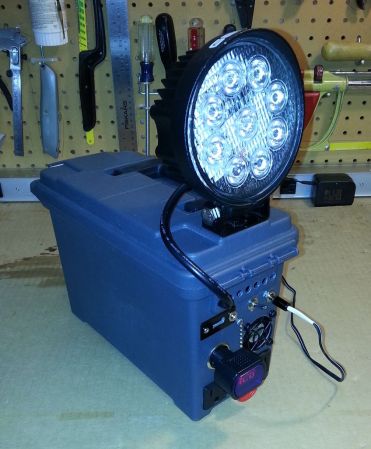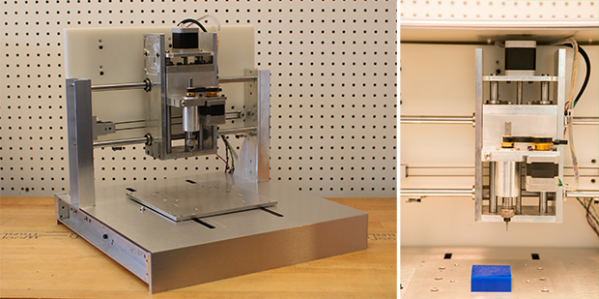Ever wonder how wood spheres are made? Normally they are made on a wood lathe with some fancy jigs and fixtures. [Izzy Swan] set out to bring wood sphere manufacturing to the masses by designing an inexpensive machine that uses a standard circular saw to carve a block of wood into a sphere.
Here’s how it works: a piece of wood is held in a wood fixture and spun using a hand drill. The fixture and drill are mounted to a wooden ring that rotates about a perpendicular axis. The user manually moves the entire assembly back and forth about that second axis while spinning the drill. Meanwhile, a circular saw is moved closer and closer to the soon-to-be-sphere, nibbling away little by little. After most of the material has been cut from the block of wood, it is removed from the fixture and spun 90 degrees to cut the two remaining nubs. The end result is a pretty nice looking sphere.
Continue reading “Circular Saw Cuts Balls… Wooden Balls, Don’t Worry”







 [Matthew] got himself into a real pickle. It all started when he was troubleshooting a broken Hewlett Packard 8007A pulse generator. While trying to desolder one of the integrated circuits, [Matthew] accidentally cracked it. Unfortunately, the chip was a custom HP Pulse shaper IC – not an easy part to source by any means. That broken chip began a 5 year mission: to explore strange new repair methods. To seek out new life for that HP 8007A.
[Matthew] got himself into a real pickle. It all started when he was troubleshooting a broken Hewlett Packard 8007A pulse generator. While trying to desolder one of the integrated circuits, [Matthew] accidentally cracked it. Unfortunately, the chip was a custom HP Pulse shaper IC – not an easy part to source by any means. That broken chip began a 5 year mission: to explore strange new repair methods. To seek out new life for that HP 8007A. 








